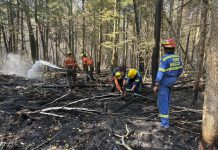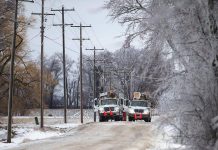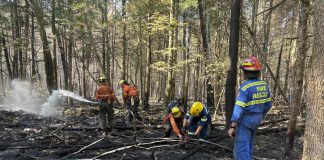
Environment Canada has issued a special air quality statement for the Kawarthas region for poor air quality and reduced visibility because of forest fire smoke.
The special air quality statement is in effect for Peterborough County, the City of Kawartha Lakes, Northumberland County, Haliburton County, and Hastings County.
Smoke from forest fires over northern Ontario has moved into the area, causing the air quality to deteriorate significantly. The poor air quality may persist through Monday (July 14) and possibly into Tuesday for some areas.
As smoke levels increase, health risks increase. Limit time outdoors. Consider reducing or rescheduling outdoor sports, activities and events.
You may experience mild and common symptoms such as eye, nose and throat irritation, headaches or a mild cough. More serious but less common symptoms include wheezing, chest pains or severe cough. If you think you are having a medical emergency, seek immediate medical assistance.
People more likely to be impacted by outdoor air pollution, including people aged 65 and older, pregnant people, infants and young children, people with an existing illness or chronic health condition, and people who work outdoors, should reduce or reschedule strenuous activities outdoors and seek medical attention if experiencing symptoms.
When indoors, keep windows and doors closed as much as possible. When there is an extreme heat event occurring with poor air quality, prioritize keeping cool.
Protect your indoor air from wildfire smoke. Actions can include using a clean, good quality air filter in your ventilation system or a certified portable air cleaner that can filter fine particles.
If you must spend time outdoors, a well-constructed, well-fitting and properly worn respirator type mask (such as a NIOSH-certified N95 or equivalent respirator) can reduce your exposure to the fine particles in the smoke. Even though exposure may be reduced, there can still be risks to health.
Check in on others who are in your care or live nearby who may be more likely to be impacted by outdoor air pollution.
This story has been updated with the latest information issued by Environment Canada.


























